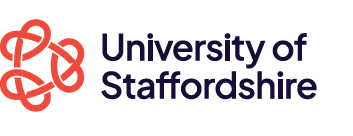by Prof Geoff Pugh and Prof Jon Fairburn
About the project
This project is interested in the presence in Stoke-on-Trent of an IT or digital sector of substantial size, high productivity, and continued growth relative to the local economy. The purpose of this research is to conduct primary research:
(i) to map the IT sector in Stoke;
(ii) to analyse the IT sector origins, structure, performance, and current and potential role in the local economy; and
(iii) thereby to inform evidence-based policies to sustain and develop this emergent sector.
Some Initial Findings
In keeping with many other local authorities, Stoke-on-Trent City Council has placed the digital sector at the centre of its economic development strategy. Anecdotally at least, there does appear a strong base to build on. The emergence of a cluster of creative media businesses on the former Spode Pottery site, the success of privately owned, cyber security business Synectics Solutions, and the continuing growth of the e-gaming capabilities at Staffordshire University all suggest that, unlike some areas chasing the digital opportunity, “Silicon Stoke” has real potential.
The available data, notwithstanding the widely known limitations at the local area level, is entirely consistent with the anecdotal picture: digital is already a major component of the local economy. In 2019, according to the experimental local area ONS GVA data[1], the digital sector accounted for 10.6% of GVA in Stoke-on-Trent, significantly higher than both its 2.1% contribution to output across the rest of Staffordshire and its 6.2% share of UK GVA. And digital in Stoke -on-Trent is fast growing: the relatively high share of local economic output reflects growth of 500% in GVA in the city since 2010, compared to a rough doubling of the sector across the UK and in the rest of Staffordshire.
As a result of this rapid growth, Stoke-on-Trent had the 42nd largest digital sector in the country in 2019 among ITL3 regions in GVA terms, despite being only the 122nd largest local economy. By contrast, Staffordshire was the 23rd local economy in size terms, but only 65th when ranked on size of its digital sector.
Striking as these figures are, they don’t tell us the full story. The 2019 GVA data identifies Stoke-on-Trent as having the 11th largest Arts, Entertainment and Recreation (AER) sector in the UK among ITL3[2] areas. The AER sector in Stoke-on-Trent is almost 3 times the value of that in Staffordshire, despite the county’s local economy being three times that of Stoke-on-Trent in total. The explanation is not hard to find; gambling accounts for over 97% of the AER sector in Stoke-on-Trent, reflecting the presence of the HQ and core operations of Bet365, one of the world’s leading online betting companies.
On any measure Bet365 is a digital company. If we adjust the ONS data using employee numbers as a proxy for GVA share, the digital sector in Stoke-on-Trent would on a conservative basis have been worth around £1 billion in GVA terms in 2019. This level of GVA would make Stoke-on-Trent, the 25th largest digital ITL3 area in the UK. On productivity, the performance is even more impressive. Matching the available data on employment to the sector GVA data at the local authority level[3], Stoke-on-Trent’s digital sector productivity of £153k per job is the fourth highest in the UK. Adjust for Bet365’s presence and the city moves up to third place, just ahead of the City of Westminster and behind Hounslow, home to Heathrow Airport, and Portsmouth, home of IBM. Even allowing for the fact that by combining some ITL areas the local authority measure may dilute the digital strength of places such as Reading, this ranking is very different to that for productivity (GVA per job) across the local authority area, in which Stoke-on-Trent is in the bottom quartile nationally.
The structure of Stoke’s digital sector initially appears to comprise of one (very) large firm (bet365) together with a large number of micro, small, and medium size firms. To what extent might bet365 be functioning as an “anchor” firm is to be investigated. However, it is clear that “digital Stoke” is not a one-firm phenomenon but is based on a wide range of firms in a range of sub-industries.
Next steps
We are currently processing and collecting primary and secondary datasets for mapping using Geographic Information Systems.
We will be looking to interview past and current workers in the digital sector starting in 2024.
If you can assist or are interested in further information about the project please contact Christine Dover below.
Research team
Prof Geoff Pugh email g.t.pugh@staffs.ac.uk
Prof Jon Fairburn email jon.fairburn@staffs.ac.uk
Visiting Prof Mark Gregory email markgregorymail@staffs.ac.uk
Christine Dover (Research Assistant) email c.j.dover@staffs.ac.uk
Research Fellow (University of Manchester) starts 1st Feb 2024
Funded through the ESRC in collaboration with the Productivity Institute at the University of Manchester.

[1] Regional gross value added balanced by industry and all ITL regions. May 2021, ONS.
[2] International Territorial Level, a recognised classification to allow comparison of places of similar sizes.
[3] Regional gross value added (balanced) by industry: local authorities by International Territorial Level (ITL) region. May 2022, ONS. Business Register and Employment Survey. 2021, Nomis.





